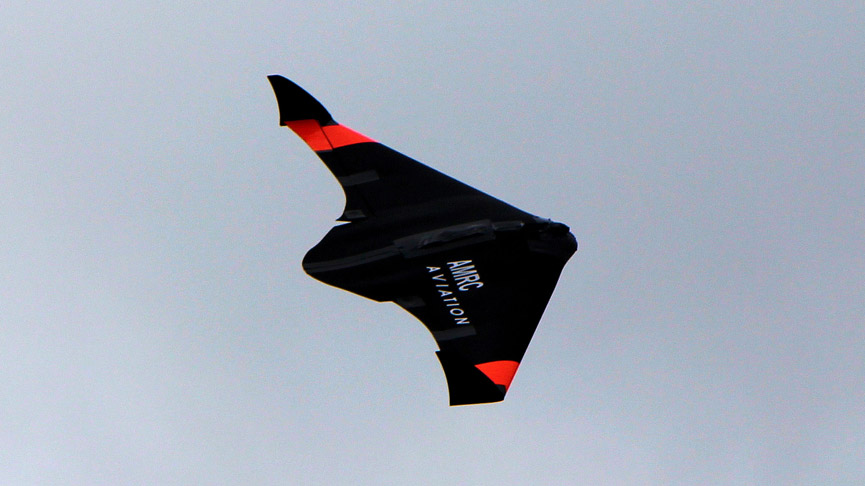New 3D Printed UAV Built in Under 24 Hours

The University of Sheffield produced this UAV is was built entirely through AM. Courtesy of the University of Sheffield.
Latest News
July 11, 2014
The Wright brothers sought to fulfill mankind’s dreams of flight when they descended on Kitty Hawk. Now, over 100 years later, Orrville and Wilbur might be astonished to see humans intentionally taking themselves out of the flight process with the proliferation of unmanned aerial vehicles (UAVs).
Additive manufacturing (AM) is making the construction of UAVs faster and less expensive than ever. A new model, designed and built by the University of Sheffield, can be printed quickly using ABS plastic. The fixed-wing, glider model was also built without the use of support materials, further bringing down costs and the overall weight of the UAV.
 The University of Sheffield produced this UAV is was built entirely through AM. Courtesy of the University of Sheffield.
The University of Sheffield produced this UAV is was built entirely through AM. Courtesy of the University of Sheffield.“By understanding the capability of the FDM [Fused Deposition Modeling] process and associated software, we were able to manipulate the design to contain a number of unique features as well as preventing build deformation,” said project lead, Mark Cocking. “All parts required for the airframe can be combined onto a single build within the DPGs [Stratasys] Fortus 900 machine, taking less than 24 hours with ABS-M30 material. Before design for additive manufacture optimization, this airframe would take over 120 hours to produce.”
The final product is a UAV that comes in nine parts, which can be snapped together prior to use. The new model weighs less than 2 kg (around 4.4 lbs.) and has a wingspan of 1.5 m (slightly less than 5 ft.). Flight control is achieved with direct action servos built into trailing edge elvons. The servos are fixed onto mounting spigots housed in the rear section of the body. The design was tested as a radio controlled slope soaring glider.
Following the successful test, researchers are investigating methods for adding blended winglets and twin ducted fan propulsion. The team would also like to add to the UAV’s onboard systems in hopes of promoting autonomous operation by GPS, and control by surface morphing technology.
The University of Sheffield’s UAV isn’t the first model to benefit from AM, but it is the first model to be entirely designed and constructed for production via 3D printing. Other models, such as the 2Seas drone, only used AM for the body. Eventually entire drones could be printed out, electronics and all, in less time than it takes to learn to fly one.
Below you’ll find a short video about the University of Sheffield’s drone.
Subscribe to our FREE magazine, FREE email newsletters or both!
Latest News
About the Author
John NewmanJohn Newman is a Digital Engineering contributor who focuses on 3D printing. Contact him via [email protected] and read his posts on Rapid Ready Technology.
Follow DE





